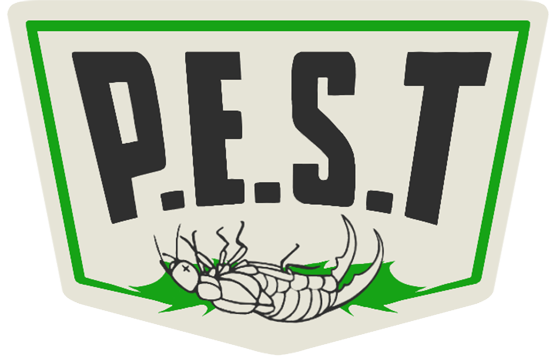Flies have long been a bane in both residential and commercial settings, not just as a mere nuisance but as a potential health hazard. These seemingly innocuous pests are capable of rapidly multiplying and infesting areas where they can spread diseases, disrupt comfort, and cause significant distress. Their presence is often indicative of other underlying sanitation issues that can further complicate the safety and hygiene of environments they invade.
Premier Pest is a leader in the field of pest control, with a strong emphasis on fly management. With years of experience and a dedicated team of experts, Premier Pest has developed targeted strategies that effectively curb fly populations, minimize health risks, and restore peace of mind to homeowners and business owners alike. Our methods are not only proven through consistent results but are also backed by the latest in pest control technology and techniques, ensuring that each infestation is handled with the utmost precision and effectiveness.
Identifying Common Flies In Indiana
In Indiana, the battle against flies is commonly waged against four primary species, each with unique characteristics that can help in their identification and management.
- The House Fly, often seen buzzing around homes and businesses, measures about a quarter-inch in length and is distinguished by its gray body adorned with four dark longitudinal lines on the thorax. Its slight hairiness and propensity for environments where food or waste is exposed make it a frequent indoor and outdoor pest.
- The Fruit Fly, smaller in stature at about an eighth of an inch, is typically tan to light brown with distinctive red eyes. These flies are notorious for their presence in kitchens and grocery stores, especially around rotting or fermenting fruits and vegetables, making them a common nuisance in residential areas.
- The Horse Fly stands out due to its larger size, ranging from half an inch to over an inch long. It has a robust body and is usually black or dark brown. Horse Flies are particularly aggressive and are often found near bodies of water or in rural areas where livestock is present, as they are attracted to both animals and humans for blood meals.
- The Blow Fly, recognized by its metallic blue or green coloration, is slightly larger than the house fly. These flies are quick to arrive at scenes where decaying meat or organic matter is present, making them frequent visitors to garbage areas and sites of decomposition.
Odd Facts About Flies
Flies are among the most agile of flying insects, with the ability to perform rapid maneuvers and even fly backwards. They achieve this through their incredibly fast wingbeats—house flies can flap their wings up to 1,000 times per minute!
One of the most curious traits of flies is their highly developed sense of smell, which is critical to their survival and reproductive behaviors. Flies have antennae equipped with receptors that can detect odors from great distances, including the smell of potential food sources and breeding sites. This keen sense of smell allows them to locate rotting food and other organic matter, which are ideal places to lay eggs. Moreover, certain species of flies can detect the smell of blood, leading them to animals and humans, from whom they can draw blood meals.
Why Flies Target Homes And Businesses
Flies are attracted to human environments for several reasons, primarily related to the availability of food sources and suitable breeding conditions. Homes and businesses often provide abundant opportunities for flies to feed and reproduce, particularly where food waste is not properly managed or where sanitation practices are lacking. For instance, open garbage bins, pet food dishes, and even fruit bowls can offer flies not only nourishment but also potential sites for laying eggs. Additionally, accumulated grease or grime in kitchens and food preparation areas can attract certain types of flies, such as fruit flies and drain flies.
The presence of flies in a setting is typically marked by several signs that indicate an infestation. Frequent sighting of flies around food storage and waste disposal areas is a common indicator. Other signs include the appearance of fly larvae (maggots) in these areas, an increase in the number of flies resting on surfaces during the day, and the presence of dark clusters of spots—in places where flies rest—known as fly specks. Homeowners and business operators might also notice an unpleasant odor emanating from places where organic materials are decomposing, which flies are known to infest.
The risks associated with fly infestations extend beyond mere nuisance. Flies are carriers of a wide array of pathogens, including bacteria, viruses, and parasites, which can contaminate food and surfaces they come into contact with. Diseases such as salmonellosis, dysentery, tuberculosis, and cholera can be spread by flies when they move from contaminated substances to human food or utensils. Moreover, certain types of flies, like the horse fly and some species of blowflies, can cause allergic reactions through their bites, which can be painful and may lead to secondary infections if not properly managed.
Secondary Issues
One of the primary reasons flies attract other pests is through the food sources they seek out and the environments they thrive in. Flies are drawn to decaying organic matter, whether it's leftover food, garbage, or compost. These same odorous and decomposing materials are also appealing to other pests like rodents, ants, and cockroaches, which are attracted to the easy food supply and potential nesting sites. As flies frequent these areas and increase in numbers, they create more opportunities for other pests to discover these resources.
Additionally, the presence of flies and their larvae (maggots) can attract predatory insects and arachnids such as beetles and spiders. These predators come not only for the flies themselves but also for the other insects that are drawn to the same conditions. This can lead to a layered infestation where the initial problem of flies becomes magnified by the addition of other pest species, each of which may require a different method of management.
Moreover, large numbers of flies can lead to distress and discomfort for humans, which may result in improper and hasty mitigation attempts like leaving out open baits or improperly sealed pesticides, which further attract more pests. Managing a fly infestation early and professionally is crucial in preventing these cascading pest issues, underscoring the importance of addressing any signs of flies before other pests are attracted to the environment. Effective control measures, thorough sanitation, and preventive strategies must be employed to maintain a pest-free environment, reducing the risk of additional infestations.
If you're experiencing issues with flies in your home or business, addressing the problem swiftly and effectively is crucial for maintaining a healthy and comfortable environment. P.E.S.T. is here to offer expert guidance and customized solutions tailored to your specific situation. Contact us today for an estimate. Our team of professionals is equipped with the knowledge, tools, and experience needed to tackle even the most challenging fly infestations.
Frequently Asked Questions
Q1: What are the most common species of flies found in Northern Central Indiana?
A1: In Northern Central Indiana, the most prevalent fly species include house flies, known for their persistence around food and waste; fruit flies, which are attracted to fermenting fruits and vegetables; and cluster flies, which often invade homes in the fall seeking shelter for the winter. Each of these species can become a nuisance in residential and commercial settings, particularly during warmer months.
Q2: How can I effectively prevent house flies from infesting my home or business?
A2: Preventing house fly infestations primarily involves maintaining cleanliness to avoid attracting them. Ensure that food is not left uncovered, garbage cans are tightly sealed, and organic waste is disposed of promptly. Regular cleaning of possible breeding sites, such as pet waste or spilled food, is also essential. Additionally, installing screens on windows and doors can effectively keep flies out of your indoor spaces.
Q3: Are fruit flies harmful, and how can I get rid of them quickly?
A3: Fruit flies are not harmful in the sense that they do not bite or sting, but they can be a nuisance and are capable of contaminating food with bacteria as they move from surface to surface. To quickly get rid of fruit flies, remove sources of attraction by disposing of overripe fruits and vegetables and cleaning any residue from recycling bins or containers. Vinegar traps, made by placing a mixture of apple cider vinegar and dish soap in a bowl covered by plastic wrap with small holes, can also be effective in capturing and controlling fruit fly populations.
All Rights Reserved | Premier Exterminating Solutions Team

